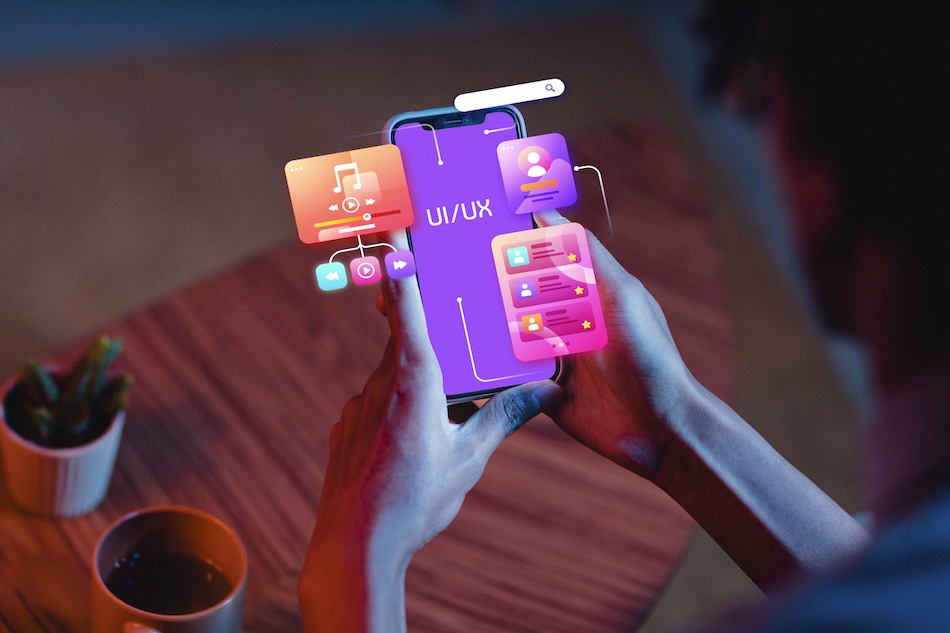Key Takeaways
Every day, there seems to be a hot new influencer on the block. Then one day, you open your Instagram and, instead of seeing a person promoting a fizzy drink or skincare product, it’s an AI influencer attracting a growing number of followers.
At first, these CGI personalities may seem strange and absurd, but their online presence and appeal are quickly becoming undeniable, with many even garnering a strong presence with millions of followers. What are AI influencers, and what are the implications of hiring them rather than human influencers on social media platforms?
Understanding the Rise of AI Influencers
The AI influencer craze makes much more sense after looking into its advantages: fully digitized, data-driven, and highly available and malleable to companies’ needs. Let’s dig into what they are, their appeal for today’s consumers, and the trends influencing their rise.
AI-Generated Social Media Influencers
AI influencers are virtual avatars powered by animation, AI, and computer graphics that make them look realistic yet still digital. Their uncanny valley appearance draws people’s curiosity and gets a strong hold of their attention, helping them rise to fame and stay on top.
Pioneering influencers, like Lil Miquela and Bermuda — two of the first AI influencers — Shudu Gram, and Magazine Luiza’s Lu do Magalu, prove this, building strong character backgrounds, personalities, and social circles that lead them to partner with fashion brands like Prada, Chanel, and Vans, and even appear on the cover of magazines.
Although they might’ve started as an entertaining hobby for their creators or even as a reflection of the culture, AI influencers have evolved to the point of profit through marketing, advertising, and brand representation.
However, it’s important to separate these influencers from other digital strategies like virtual or augmented reality (VR/AR), as they’re only present on screen via social media platforms or editorial campaigns — no brand activations, meet and greets, or other in-person events.
The Appeal of AI Influencers
It’s clear to see why brands might prefer hiring an AI over a human influencer. These personalities are highly customizable, giving companies more control over how they want their product to be presented through the AI influencer, whether that’s the appearance, messaging, or preferred schedule.
Their cost is another advantage, as AI influencers are cheaper, according to tech source Built In, — this makes much more sense when realizing these characters have no cost of living as opposed to their human counterparts.
And, because they’re fully digitized, it’s easier for creators and brands to track engagement data and analytics that are vital to marketers.
Plus, these characters are available 24/7 with no breaks in their digital world, making them a year-round entertaining and cost-effective service for brands. With little to no downtime, AI influencers potentially bring a more efficient and smooth partnership experience with brands that accommodate their company’s marketing needs rather than the other way around.
The Growing Market
It’s quite novel, but the AI influencer market is already making massive profits — it was estimated at $6.06 billion in 2024, and it’s expected to grow by over 40% annually. These numbers demonstrate that brands and consumers alike enjoy this innovative twist in influencer marketing, pointing toward the future of marketing strategies.
And, just like humans, each influencer is geared towards a certain community. For example, Shudu is a digital supermodel that appeals to high-fashion brands and their fans, from her physique to her style and demeanor, while Rozy creates content on sustainability in fashion and lifestyle trends , appealing to brands in those industries. As the ecosystem evolves, brands looking for more authentic engagement alongside AI campaigns increasingly explore options offered by micro influencer agencies, which help identify real, niche creators whose audiences trust their voice — a balance many marketing strategies now aim to strike.
Content Creator Insurance Guide
AI-Generated Social Media Influencers: Key Risks for Brands
AI influencers might be all the rage these days, but they don’t come without their share of risks for brands that decide to take them up. This groundbreaking kind of marketing must be handled with tact, and, ironically, the humanity that connects them to the target audience brands are trying to reach.
Misrepresentation and Deception
Perhaps one of the biggest advantages of AI influencers is how eye-catching they are due to their virtual nature. Sometimes, they might even seem too real for people to tell them apart. Such is the case of Aitana Lopez, the hyper realistic CGI influencer from Spain who claims to receive multiple direct messages from people asking her out.
But this isn’t necessarily a good thing for brands. Their failure to disclose that their virtual influencer is AI-generated falls into misrepresentation and deception that might mislead consumers into believing they’re seeing real people use the products or services.
Evidently, these situations have sparked a new set of concerns about ethics in the AI space — who’s profiting from these AI influencers? How can they advertise a product they can’t use? And, where should brands and regulators draw the line?
Brand Alignment and Control
Many of the hazards attached to AI influencers are nothing new to brands working with human influencers. For example, these generated personas still control their social media platforms embedded with their personality. At any moment, they could make a problematic post or statement that directly affects brands associated with them.
However, a new risk arises with the loss of authenticity AI influencers bring to the table. When influencing has been all about relatable or aspirational content, how can consumers feel identified or inspired by these fake characters?
Data Privacy and Security
Since AI influencers aren’t technically real, it’s important to ask who has access to the endless data points they’re amassing from social media engagement and how it’s being used. These are valid data privacy and security concerns for consumers and brands alike, especially if they’re in places like California or the European Union with tight data privacy regulations.
Moreover, the minds behind AI influencers must ensure their digital presence is secure from breaches, especially when they handle external company and consumer data that hackers might consider valuable.
For brands, it’s vital to ask these questions and know all data security facts when working with AI influencers — any security breaches or noncompliance can negatively impact them too.
Copyright and Intellectual Property
AI influences also raise copyright concerns for similar reasons as those regarding data privacy. It might be a complex situation to attribute property rights to an inexistent entity — is a company behind them, or is it an independent team or person? These legal inquiries are worth exploring ahead of cutting any checks with these novel AI influencers.
Likewise, it’s essential to still warn these characters of copyright infringement risks stemming from music, images, or other content used in their sponsored posts. This ensures your partnership goes as smoothly as possible, avoiding improper IP usage.
On the other hand, an AI influencer’s digital image might be an easier target for deepfakes and other harmful impersonations. Brands must be wary of even these small details to land successful and risk-free brand deals.
Risk Management Strategies and Insurance Considerations
Diving into the next big thing has as many advantages as it does risks, and trying to reduce any unpleasant situations can only raise your chances at success. From risk management strategies to suitable insurance options, some robust solutions include:
Due Diligence and Contractual Agreements
To avoid data breaches, copyright infringement, and other salient risks, brands must thoroughly vet AI influencers before making deals.
Performing due diligence, like reviewing previous collaborations with other brands, ensuring the virtual influencer’s posts align with your company values, and analyzing their engagement, and drafting a contract clearly outlining ownership, usage rights, liability, and ethical guidelines, are vital steps to forming a successful brand deal.
Content Monitoring and Oversight
As AI influencer marketing grows, so have the tools to perform content monitoring that ensures brands can keep track of their campaigns and their performance. AI influencers shouldn’t be exempt from these practices, giving companies peace of mind that they’re working with a virtual influencer who steers clear of inappropriate or off-brand messaging.
Likewise, companies or their marketing agencies should establish a protocol for swiftly removing posts in case of unwanted incidents.
Data Privacy and Security Measures
Above all, brands must secure their assets when it’s time to partner with AI influencers and make sure they’re complying with relevant regulations. Any interaction must happen through secure channels to avoid breaches, sponsored posts must be flagged as such, and any user information and interactions must be protected.
Insurance Coverage
As an important safety measure, brands should explore their insurance options when beginning their AI influencer marketing journey.
General Liability
For example, including clauses that cover advertising injuries under a general liability policy can make all the difference if AI influencer marketing takes a big part of your brand awareness efforts.
Cyber Liability
Cyber liability coverage can come in handy with digital-heavy activities such as partnering with an AI influencer to cover data breaches and other cybersecurity incidents.
Directors and Officers
Company executives are at the front of every decision. As a result, they often need extra protection when claims are made against them, whether due to a marketing campaign gone wrong or an AI influencer making claims against executives. Directors and officers (D&O) insurance can be quite handy in these cases.
Media Liability
Media liability is a specialized package that covers costs related to legal or reputational retaliation from published media content. This mix of policies can be a life-saver if companies have a significant online presence where stakes are high.
More Insurance Coverage
Other relevant coverages include tech errors and omissions (E&O) and intellectual property liability insurance. These policies protect companies in case of incidents like product or service flaws or malfunctions and IP claims, whether a company accidentally infringes upon someone’s proprietary content or their intangible assets are being infringed upon.
The allure of AI influencers can be quite a promising gamble for brands to bet on. They blur the lines between reality and artificial content, are flexible when it comes to creative output and availability, and have proven to attract a wide range of consumers. But diving into this innovative AI influencer format can bring cybersecurity, reputational, contractual, and other risks that companies must look into before fully committing to this brave new marketing world.









